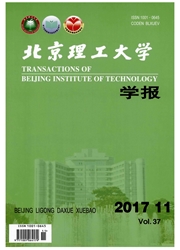

 中文摘要:
中文摘要:
为了研究不耦合装药结构对爆破效果的影响,在实验室中采用水泥砂浆模型对不耦合装药结构进行了模型实验,并对爆破块度和爆炸应力波进行筛选及统计与测试分析.采用AUTODYNA有限元分析软件对不耦合装药结构爆炸应力波在岩石传播过程中粉碎圈、裂隙形成进行了数值模拟研究.模型实验研究表明,不耦合装药结构可提高炸药能量利用率及改善爆破块度分布;数值模拟结果显示,炸药和炮孔壁之间的间隙可以改变应力波在炮孔壁上的加载率,延长了应力波和气体的作用时间,显著地降低了粉碎圈厚度,提高了炸药能量的利用率和爆破的效果.
 英文摘要:
英文摘要:
In order to investigate the influence of decoupling charge structure on rock blasting, explosion experiments were carried out in the laboratory with cement mortar models and air- decoupling charge with different diameters. The sizes of blasting fragments were screened and the explosive strain was statistically analyzed. Different charge structures were used to numerically simulate the forming process of the cracks and crushing circles during the propagation of explosive stress wave. Experimental results indicate that, compared with coupling charge, air- decoupling charge structure could improve the distribution of fragment size and increase the utilization ratio of explosive energy. Numerical simulation also illustrates that the gap between charge and the wall of borehole could change the stress wave loading rate on the wall, prolong the action time of stress wave and gas, decrease obviously the thickness of crush zone, and lead to the improvement of blasting effect.
 同期刊论文项目
同期刊论文项目
 同项目期刊论文
同项目期刊论文
 期刊信息
期刊信息
